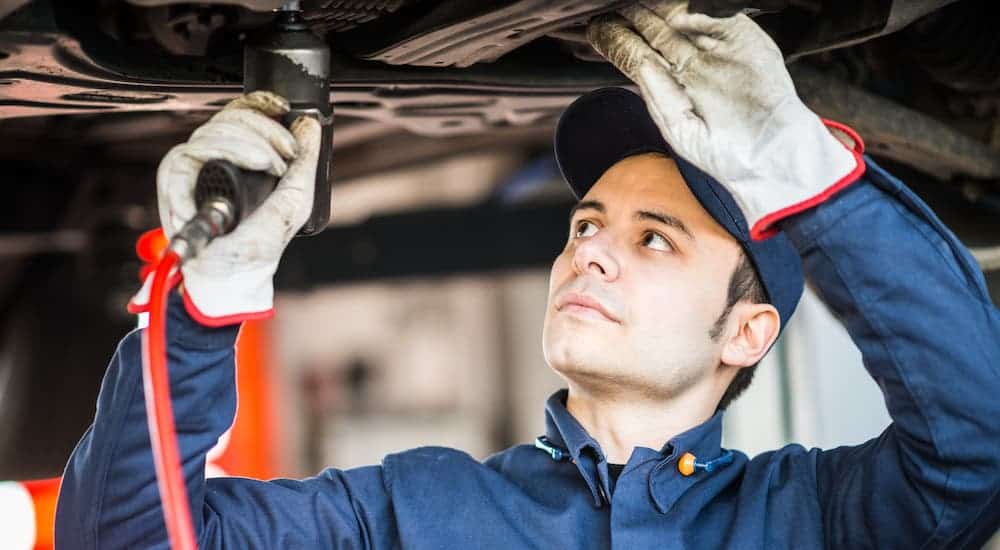A lot of folks are intimidated by the field of automotive mechanics, which is understandable. There are lots of moving parts involved, literally. But quickly let’s use a hypothetical scenario: a mechanic approaches you after servicing your car and says, “ok so your intermediate roller hook was really dilated so we’re gonna need to do a complete intubation of the toggle until we can get it back in line with the impression lever.” Now, if you think geez that sounds expensive, you may need a mechanics tutorial. That pretend mechanic was talking absolute nonsense, combining medical terms with random components of the first printing press. Today’s lesson will focus on a very important health check for your vehicle: the transmission service.
An oil change is familiar to the average driver, a transmission service, on the other hand, is somewhat arcane. We aim to take some of the mystery out of this critical piece of machinery. So buckle up (not literally you don’t have to bring the car in just yet), we are going to put you on the path to becoming more transmission savvy by answering the frequently asked questions below.
What Is a Transmission?
A transmission is the machine in the car that takes power generated by the engine, and transfers (or transmits) that energy to the wheels so the car can actually move. Without a transmission, a vehicle would just be a noisy thing that sits under the hood of a car that goes nowhere. Sounds simple enough.
So, the transmission is one of the most important components of a vehicle, and it is very important to keep it in good shape for the efficient operation of the vehicle. It is one thing for the transmission to be running at an optimal level, but it is quite another to know that a shoddy transmission in your car is not safe.
Also, be aware that ignoring a much-needed transmission service could end up being a very costly mistake. It is usually more cost-effective to fix individual parts of the transmission since it is so expensive to replace a new one. There are roughly 800 parts to a transmission, and because there is so much to discuss, we will only pick a couple of the major parts to go over.
For now, just recognize that for most vehicles, there are two basic types of transmissions, manual and automatic. Second, transmission fluid cools and lubricates the moving parts of the transmission machinery. Third, the basic parts of the transmission consist of the computer, torque converter, hydraulic system, and the planetary gearset.
It is good to know that transmission repair and maintenance is somewhat of a specialty due to the complicated nature of the transmission and its number of parts. Not all shops or mechanics are able to work on a transmission or diagnose a potential problem.
Now that we know the basic principle of a transmission, its components, and the importance of keeping it in good condition, let’s explain why this is the case. And this will involve getting into the mechanical engineering aspects and getting under the hood, so to speak.
What Is Involved in a Transmission Service and When Do I Have to Get Them?
A transmission service is similar to an oil change for the engine. Essentially, the transmission fluids and the filters will need to be changed, just like an oil change. In terms of parts, if anything needs to be replaced when you visit a mechanic for maintenance, it will most likely be the pan gasket, or perhaps the pan gasket drain plug. Other than these two pieces, it’s not a usual part of transmission maintenance to replace any other parts. The pan gasket is the lining that prevents transmission fluid from leaking out. It is relatively common and easy to diagnose. If the transmission is leaking fluid, the pan gasket is by far the most likely culprit.
Assuming that there is no damage to the transmission and the vehicle is not experiencing symptoms, such as rough shifting, gear slippage, a warning light on the dashboard, or fluid leakage from underneath the vehicle. In that case, a computer will be hooked up, and a diagnostic scan will be done to try to locate the issue.
Another potential option for cleaning out the transmission is a transmission flush, but there are different schools of thought on the necessity and wisdom of doing so. Some mechanics think that it will improve the life of the transmission since metal particles from gear grinding and transmission wear and tear will be floating around in the transmission fluid to some degree. They believe it is a good idea to try and completely flush out these particles. The other school of thought sees automatic transmission flushes as an unnecessary undertaking that, if done at all, should be performed by a transmission expert.
In terms of the when of transmission services, there is not a universal answer. There is a lot of debate amongst experts, and it depends on the vehicle, so the best thing to do is to check the manufacturer’s manual and note the service intervals. In general, however, the range tends to be somewhere from 30,000 to 100,000 miles for automatic transmissions and between 30,000 to 60,000 for manual transmissions. But as mentioned before, just consult the manufacturer’s recommendations, and it will answer the question.
What Are the Differences Between Manual and Automatic Transmissions?
Let’s quickly cover the main differences between the two types of transmissions. Automatic transmissions use a filter for the fluid, and manual transmissions do not. Automatic transmission fluid is directly involved in the shifting of gears since it uses hydraulic power. In manual transmissions, the fluid is not directly involved in shifting, and it does not use hydraulic power.
Manual transmissions use either regular motor oil, hypoid oil, or automatic transmission fluid depending on the model. Automatic transmissions only use (take a wild guess) automatic transmission fluid. The most likely part to be replaced in a transmission service is the pan gasket. And this goes almost exclusively for automatic transmissions. Assuming a vehicle is going in for a routine transmission service and not because a problem with the transmission is suspected, this should be the only part that will need to be replaced.
Where Do I Go When I Need a Transmission Service?
The best thing to do when you know you need your transmission worked on is to bring it to a trusted mechanic. The great news is that at Kings Ford Quick Lane, we are well equipped to perform transmission fluid changes, part replacements, and full transmission replacements. When you know it’s time to get your transmission worked on, or you just want to make sure it’s in tip-top shape, let us take a look at it. We want to help you keep your vehicle running smoothly for years to come!
When you are ready, give us a call at (513) 952-8885 to set up an appointment or visit us at 8755 Fields Ertel Road in Cincinnati, OH. We look forward to hearing from you!



